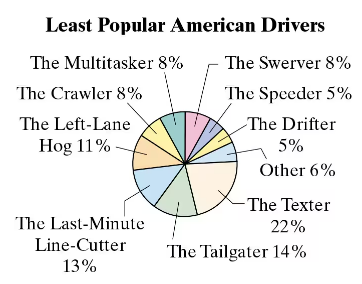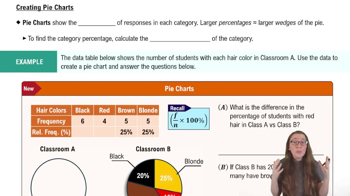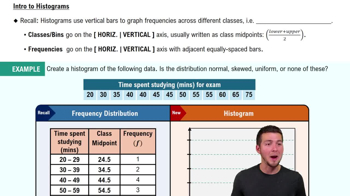Here are the essential concepts you must grasp in order to answer the question correctly.
Pie Chart Interpretation
A pie chart is a circular statistical graphic divided into slices to illustrate numerical proportions. Each slice represents a category's contribution to the total, making it easy to compare relative sizes. In this context, the pie chart displays the least popular American drivers, with each segment showing the percentage of respondents identifying each type of driver.
Recommended video:
Percentage Representation
Percentages are a way to express a number as a fraction of 100, providing a clear understanding of proportions. In the graph, each driver type is represented by a percentage, indicating how many respondents view them as the least popular. This allows for quick comparisons between different categories, highlighting which driver types are perceived most negatively.
Recommended video:
Data Analysis and Observations
Data analysis involves examining, cleaning, and interpreting data to extract meaningful insights. In the context of the pie chart, making observations requires identifying trends, such as which driver types are most and least popular. Observations can include noting the highest percentage (The Textter at 22%) and comparing it to others, which helps in understanding public perceptions of driving behaviors.
Recommended video:
Introduction to Collecting Data

 Verified step by step guidance
Verified step by step guidance Verified video answer for a similar problem:
Verified video answer for a similar problem:

